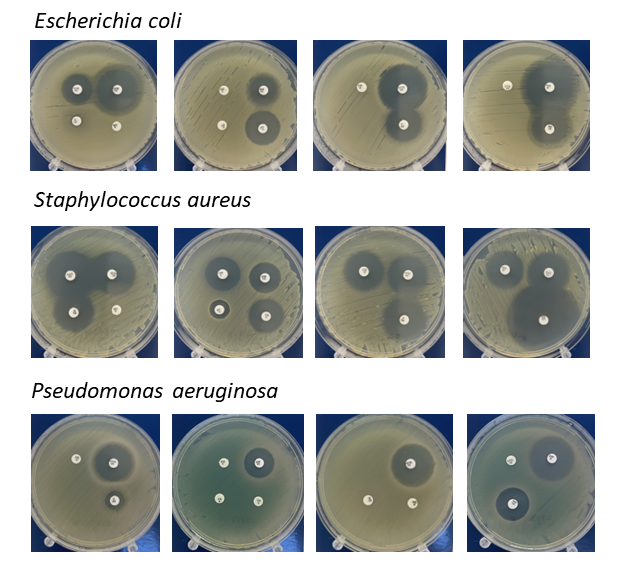The Antibiotic Susceptibility Test (AST) is a microbiology technique used to determine the antibiotic resistance profiles of bacteria found in an infection site. The resulting sensitivity and resistance profiles guide which antibiotics are used for therapy, resulting in better outcomes for patient health, owners time and money, and antibiotic stewardship. Results can be obtained in 2-3 days.

GeneXLabs uses EUCAST recommended control strains, Escherichia coli, Staphylococcus aureus, Psuedomonas aeruginosa, in routine QC tests. These recommended control strains each have well-defined resistance profiles making them ideal for this purpose.
Commonly used Antibiotic Discs:
- amoxicillin 20 ug/clavulanic acid 10 ug
- cefepime 30 ug
- ciprofloxicin 5 ug
- clindamycin 2 ug
- erythromycin 15 ug
- gentamycin 10 ug
- imipenum 10 ug
- linezolid 10 ug
- meropenem 10 ug
- metronidazole 5 ug
- oxacillin 1 ug
- tetracycline 30 ug
- trimethoprim 5 ug
- vancomycin 5 ug
Antibiotic Stewardship
Antibiotics have only been used by humanity for the past 80 years. In that relatively short period, many millions of lives have been saved but at the same time bacterial pathogens have developed resistance to nearly all classes of antibiotics used for therapeutic treatment. Projections made several decades into the future paint a concerning picture. By the year 2050, it is expected that 100 million people will die from antibiotic multiresistant bacterial infections.
Why are we seeing a rise in resistance? Bacteria are one of the oldest lifeforms on this planet and are masters of adaptation. Genes that confer antibiotic resistance can be shared amongst promiscuous bacteria living in the same environmental niche. Once acquired, the resistance gene is integrated into the bacterium’s genome becoming a genetic feature that is inherited by all future offspring. At the same time, the use of antibiotics creates a selective environment that favours resistant bacteria over antibiotic susceptible bacteria.
In order to save the efficacy of existing antibiotics and slow down further development of resistance we need to minimise the use of antibiotics. An antibiotic susceptibility test provides our next generation with hope by identifying the most effective antibiotic to use for therapy. Informed decisions are not only beneficial to patient outcomes but also minimises selection towards the success of multiresistant pathogens. If we all make a conscious effort to minimise the use of antibiotics we can at least slow the tide and perhaps even turn things around for our future generations.